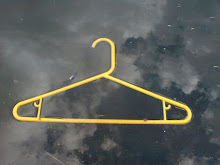27/04/2009
Les Bonnes Femmes
The film excels in its representation of a sinister violence of the everyday, and of the gross irresponsibility of a new, individualistic and thrill-seeking post-war European society. There may also be the suggestion that the very kind of romanticism stimulated in this oppressive and frivolous social context is ill-fated, somehow formless and apocalyptic. Ultimately it is the disillusioned dreamer that is murdered, arguably having been driven to a dangerous margin in search of a more meaningful alternative to the everyday froth and stasis of parisian life. And it is there at that margin that she is eliminated. She is eliminated in the same way that the life of the animals at the zoo has been eliminated - they have had their essence throttled out of them by being put behind bars, and for Chabrol there is little doubt as to who are the more primitive in the scene where the women and Jane's companion taunt the monkeys. The film's depiction of this sort of animal hedonism are uncomfortable and dizzying. At the same time, the girls sit out their time in the shop like animals in a cage. The idiotic dunking at the pool is childish and cruel - it is the way in which the characters infantilize themselves and others, the women literally held under water and stifled. Crucially, it is at this point that the murderer sees his opportunity to intervene at what is for him a particularly favourable, suffocating moment. The murderer is the predator waiting to pick off the straggler from the pack, following at a distance on his motorcycle steed, and his victim hangs back because of the vacuousness of the pack and its pastimes. There is a parallel to this sinister pursuit - the overweight, past-it companion of playboy Marcel rather scandalously tries to cop a feel of Jane whilst she petts with Marcel - a little bit out of order, but harmless and pitiful overall, even amusing, we might think. However, this is the very same sinister game. It is the amoral pursuit of a kind of wreckless pleasure in a world where faith in higher human morality has been lost. The superficial comedy of him holding in his stomach takes on a dark, symbolic significance in the light of the physical violence of the film's climax. What seems an embarrassing lack of dignity is actually the enforced conforming to a tyranny of pleasure-seeking youthfulness. The murderer also suddenly reveals behind the composed and seemingly adult exterior a totally juvenile and inappropriate sidew when he blows raspberries in an elegant restaurant, similar to the garish Marcel. The murderer's manner of seduction is childish trickery, and his repertoire of talents displayed at table rapidly descends into crude obscenity. In the opening scene of the film, there is effectively a stand off between the motorbike murderer and the automobile dandies - they are all equally salubrious predators who only differ slightly in tactics, whilst the violence of their intent is the same. They are equally culpable in their lack of responsibility. And fused into the film at the very outset is the theme of the new materialism, a manifestation of empty physicality at the level of society. The Cadillac, the motorbike, the brands of domestic appliances displayed in shop windows. It is a society of the image, of the material. Note also the supposedly 'good catch' one of the girls lunches with, whose parents she meets, under strict instructions of exactly what to say about what according to a set of rigid petit bourgeois social conventions. Her fiancee maybe more serious, more safe, but she must become an automaton to fulfil his family's social expectations. The fiancee himself rattles off the lines about Michael Angelo like some kind of deranged, compulsive incantation - symbols of high culture have been reduced to inflexible tokens of class etiquette. Implicit, then, is responsibility in Chabrol's cinema, as he declines to make work of pure entertaining spectacle, using his spectacle rather to disconcert, both thematically and through visual discord and excess. See how we enjoy ourselves, he says, it is the pleasure of selfish exploitation and animal savagery. The final scene echoes a warning, the glazed eyes of a woman fixed looking into space over the shoulder of a besuited man, with his plump neck penned into a shirt collar, but seen as faceless, animal flesh all the same, dancing with his lobotomised prey under the alluring mirrored glint of the revolving disco ball.
Labels:
Chabrol,
conscience,
consumer,
individualism,
predator,
romanticism,
violence
Subscribe to:
Post Comments (Atom)

No comments:
Post a Comment